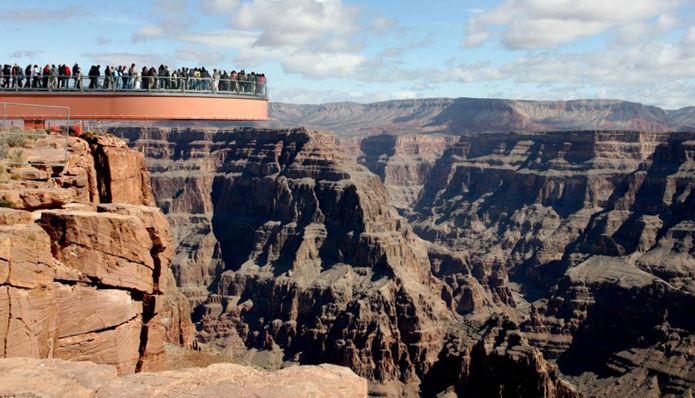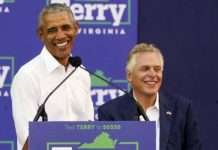
DENVER, Nov. 8 (UPI) — Momentum in Congress has sputtered for bills that would help the U.S. National Park Service finance a $12 billion backlog in maintenance needs.
Even though it has wide bipartisan support, the Restore Our Parks legislation that would send $6.5 billion over five years to improve park infrastructure is lingering in legislative limbo. The money would come from offshore and onshore royalty revenues for oil and gas on public lands.
“This legislation represents one of the most significant investments in the 100-year history of the Park Service,” co-lead author Sen. Mark Warner, D-Va., said in an email. “The longer we kick the can on the deferred maintenance backlog, the more we’ll hold back communities that rely on visitors to help generate economic activity.”
Sen. Lamar Alexander, R-Tenn., urged the Senate on Tuesday to “make sure [the bill] gets out of committee” and said lawmakers should not “miss this opportunity” to consider the bill on the Senate floor.
The National Park Service has reached an infrastructure funding crisis that encompasses 419 sites for projects such as roads, bridges and wall repairs, water sanitation upgrades and replacing or fixing visitors centers.
The House bill, with 329 Democrat and Republican co-sponsors, sailed through multiple committees and is awaiting leadership to schedule a vote, said Marcia Argust, the Pew Charitable Trust’s project director of Restore America’s Parks.
Supporters hope the Senate Energy and Natural Resources Committee will include the bill for a markup before the winter holidays, said John Garder, senior director of budget and appropriations for the National Parks Conservation Association.
From $655 million in infrastructure repairs needed at the National Mall in Washington, D.C., to $100 million to plug the leaky water system at Grand Canyon National Park, the parks agency has delayed for decades fixing infrastructure projects on its to-do list.
Yellowstone National Park announced last week that it must add a deteriorating bridge to a $585 million list of fixes the park requires. Concrete is crumbling off the 1960s-era bridge over the Yellowstone River in the northeast corner of the park.
Yellowstone is the nation’s first national park and has some of the oldest amenities, many of which have not been maintained.
A survey by the Pew Charitable Trust showed, for example, that employee housing at national parks — including Yellowstone — was estimated to require $186 million in repairs. The park system received only $2.2 million in housing funds.
Yellowstone’s seasonal staff members are housed in 40-year-old trailers with leaky roofs. Staff cabins at Rocky Mountain National Park in Colorado deteriorated so much they had to be shuttered.
Economists say the investment in infrastructure is well worth the price.
America’s national parks have an economic value of $100 billion per year, according to a June study, “Valuing U.S. National Parks and Programs: America’s Best Investment,” by public policy expert Linda Bilmes of the Harvard Kennedy School and co-editor John Loomis, an economic valuation specialist at Colorado State University.
Pew estimated in a 2018 study that national parks and neighboring hotels, restaurants and grocery stores are responsible for 330,000 jobs. A further 100,000 jobs could be created if park maintenance backlogs were funded, the Pew study said.
In October, about 400 mayors and county officials from towns near national park sites urged Congress in a letter to move forward with the bills, saying that visitors to the parks create economic benefits to residents when they buy food, lodging and gas nearby.
“As gateways to national parks, we understand firsthand the economic importance of sustaining these special places in ways that attract visitation and tourism,” the mayors’ letter said.
Advocates for the national parks point to their popularity as one justification for doing the repairs. The parks are attracting record crowds, which have reached some 330 million visitors a year.
“The national parks are the most beloved government entity in the country,” Harvard’s Bilmes said. “People come from all over the world to see the national parks, but the parks are on an unsustainable funding trajectory.”
National Parks are financed through several federal appropriations channels, such as the Land and Water Conservation Fund, and each must be voted on separately by Congress. Each has restrictions on how funds can be used, Bilmes said. Additional restrictions are placed on fees and philanthropic gifts.
The Harvard study recommended that the Parks Service and the U.S. Forest Service budget appropriations be changed to a two-year cycle, similar to the Department of Veterans Affairs. The study’s authors also suggested that a national resource meant to last for future generations could be better funded with an “endowment” model.
“Harvard has an endowment, why not the national parks?” Bilmes asked.
She called the nation’s park system a “unifying” element in a time of national partisanship and inequality.
“In focus groups around the country, people told us why the parks matter to them,” she said. “People who didn’t have a huge amount of material stuff in their lives believed that the parks belonged to them and were part of their legacy to give to their children.
“It truly is ‘America’s Best Idea.’ Also America’s best investment, our research shows.”






